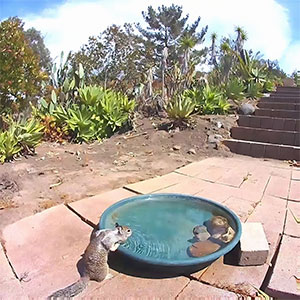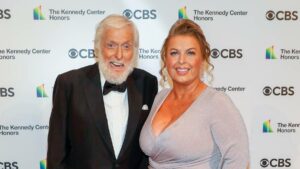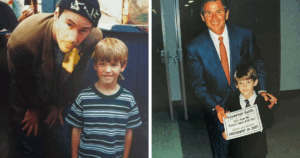“The Surprising Journey: How a Simple Song Became America’s Beloved Holiday Anthem”
In the delightful world of musicals, few things are as enchanting as the juxtaposition of summer sunshine and winter wonder. Case in point: “My Favorite Things,” a catchy tune from *The Sound of Music*, originally serenaded in the midst of a thunderstorm. Let’s face it, the von Trapp kids might be shivering in their sundresses while Julie Andrews croons about raindrops and whiskers, but right around Christmas time, this lively summer anthem somehow finds its way onto holiday playlists with the enthusiasm of a jingle bell choir! So, how did this lilting favorite morph into a yuletide staple? Buckle up for a whimsical journey through musical history and marketing maneuvers, and you might just find the answer lurking in a chorus of sleigh bells. Curious? You’re in for a treat! Click here to *[LEARN MORE](https://www.mentalfloss.com/article/61706/14-things-you-might-not-know-about-sound-music)*.
In 1965’s The Sound of Music, a thunderstorm sends the spooked von Trapp children into the room of their new governess, Fräulein Maria (Julie Andrews), who calms them with a song about her favorite things. If the thunderstorm weren’t enough of a seasonal marker on its own, the surrounding scenes’ lush greenery and sundresses would surely seal the deal for summer.
But every holiday season, “My Favorite Things” blares from speakers right alongside the likes of “White Christmas” and “Santa Claus Is Comin’ to Town.”
So how did a summer song become a Christmas classic?
“Just Add Sleigh Bells”
The Sound of Music, based on a true story, began as a Broadway musical with music and lyrics by Richard Rodgers and Oscar Hammerstein II and a book by Howard Lindsay and Russel Crouse. It premiered on stage in 1959 (starring Mary Martin as Maria) and nabbed a handful of Tony Awards, including a tie with Fiorello! for Best Musical.
In the golden age of movie musicals, it was only natural that The Sound of Music would end up on the silver screen. And by the time it hit theaters in April 1965, plenty of moviegoers unfamiliar with the stage version would still have recognized “My Favorite Things”—in part because producers had used it as a marketing tactic.
According to SiriusXM programming director Lou Simon, a song promoter for Rodgers and Hammerstein’s music publishers had asked music producer Mickey Kapp to have an artist record a track from the film in 1964. “The plugger said they were worried because this was such a big-budget movie, and they thought having a hit song would help sell tickets,” Simon remembered Kapp telling him, per Billboard. “They wanted something that would be as big as ‘Maria’ from West Side Story.”
When Kapp mentioned that Jack Jones had a Christmas album on the docket, the promoter floated “My Favorite Things” as a natural fit. Kapp didn’t think so, for the simple fact that it wasn’t a Christmas song. “Just add sleigh bells,” the promoter countered. Jones himself told Billboard that he and Kapp then mulled it over and “agreed it would make a good Christmas song.”
These Are a Few of My Box Office Earnings
The Jack Jones Christmas Album debuted in autumn 1964 with “My Favorite Things” as track four: a lightly jazzy number that kicks off with jingle bells and doesn’t skimp on the tinkling instrumentals. The album reached the 15th spot on Billboard’s holiday chart, and Jones performed a medley of “My Favorite Things” and “The Christmas Waltz” on The Ed Sullivan Show in late December.
It wasn’t as if he had introduced a completely obscure song to the American public. For one thing, the original Broadway cast album of The Sound of Music, published in 1959, had been Billboard’s top album for 16 weeks and stayed in the top 10 for almost two years beyond that. More than four and a half years after its release, the LP still occupied Billboard’s top 200. For another, one of John Coltrane’s most popular offerings was a nearly 14-minute-long jazz take on “My Favorite Things” from his March 1961 album of the same name.
Jones wasn’t even the first to sing a Christmas rendition of the song. Ironically, Julie Andrews herself had performed it on a 1961 Christmas episode of The Garry Moore Show, accompanied by a legion of tuxedoed fa-la-la-ers.
Sure, Jones had temporal proximity on his side: The film was due in theaters mere months—not years—after his release. Did this really bolster The Sound of Music at the box office come April? We can’t definitively say no. But it seems unlikely that a 1964 Christmas song inspired hordes of people to see a film the following spring that had nothing to do with Christmas (though it has since become a Christmas classic—ABC always broadcasts it during the holidays).
In short, by Christmasifying “My Favorite Things,” Kapp and Jones pretty much guaranteed that everyone would have stopped listening to it long before The Sound of Music premiered. Not to mention that they never issued Jones’s cover as a single, precluding it from the kind of airplay and publicity that came with the status. (The Billboard Hot 100, for example, only started admitting non-singles in 1998.) And even if Jones’s work did prompt some people to buy movie tickets, The Sound of Music hardly needed the help; it unseated Gone With the Wind as the highest grossing film of all time and remained in theaters for roughly four years.
What Jack Jones does deserve credit for is showing the music industry how seamless “My Favorite Things” could sound on a Christmas album. The 1965 holiday season saw it on the Supremes’ Merry Christmas, Andy Williams’s Merry Christmas, and Eddie Fisher’s Mary Christmas. It also made Barbra Streisand’s 1967 A Christmas Album—one of Billboard’s top holiday albums of all time—and finally landed on Billboard’s Hot 100 in 1968 thanks to Herb Alpert & the Tijuana Brass’s instrumental single.
Which leaves us with just one question: Why exactly does “My Favorite Things” fit Christmas so well?
The Proof Is in the Crisp Apple Strudel
To answer that, we split all of Maria’s “favorite things” into three categories:
- Things that definitely are related to winter or the holidays
- Things that definitely aren’t related to winter or the holidays
- Things that could be related to winter or the holidays
Here’s how the analysis shook out.


If you only look at these two groups, it’s more or less a toss-up. The winter-coded things have the smallest possible lead, and you could even argue for a tie if you separate “that melt into springs” from “silver-white winters” and knock it into the other bucket. But it’s the next category that really gives winter the advantage.

In the context of the film, these things don’t necessarily scream Christmas—and you could easily make a case against the winter coding of any given entry. A group of girls in white dresses with blue sashes, for example, might seem more apt to gather around a maypole than a Christmas tree. But if the song has been zhuzhed up with sleigh-bell sound effects and you’re hearing it right after, say, “Sleigh Ride,” it’s hard to picture a cream-colored pony doing anything other than giddying up through a wonderland of snow.
Discover More About Christmas Music:
manual














